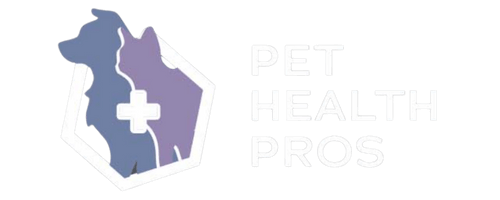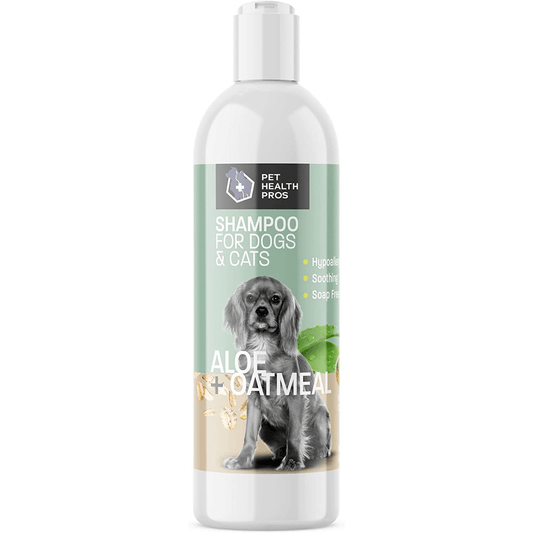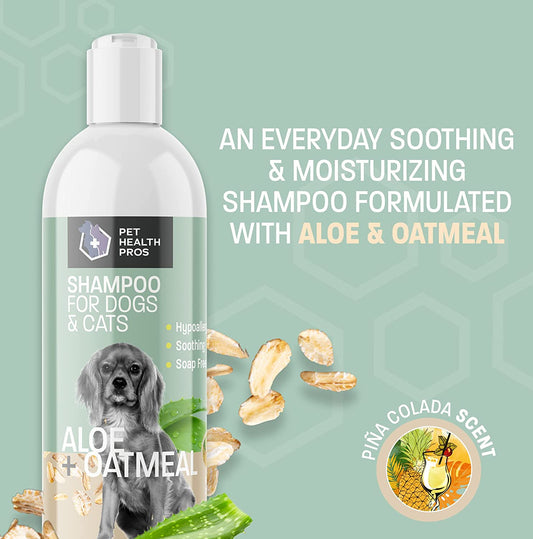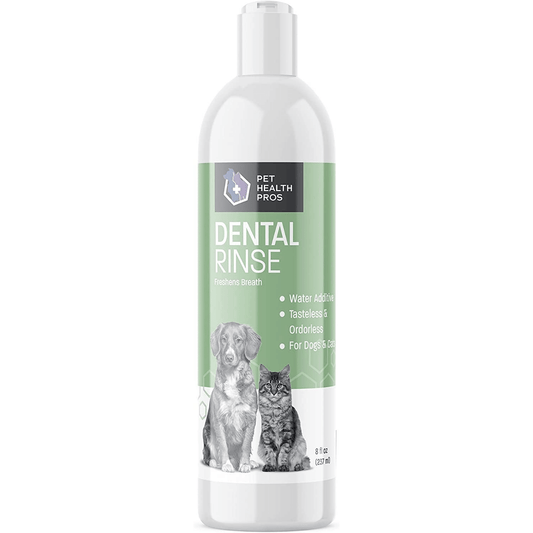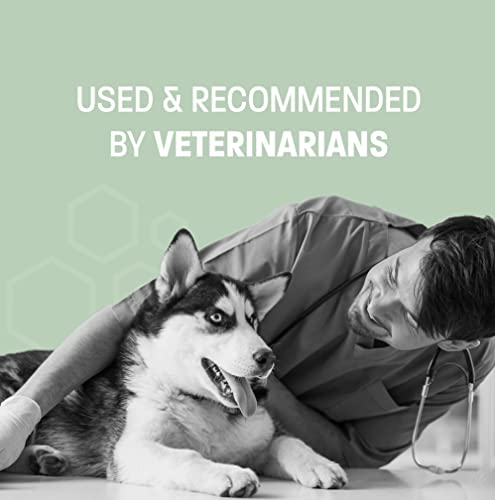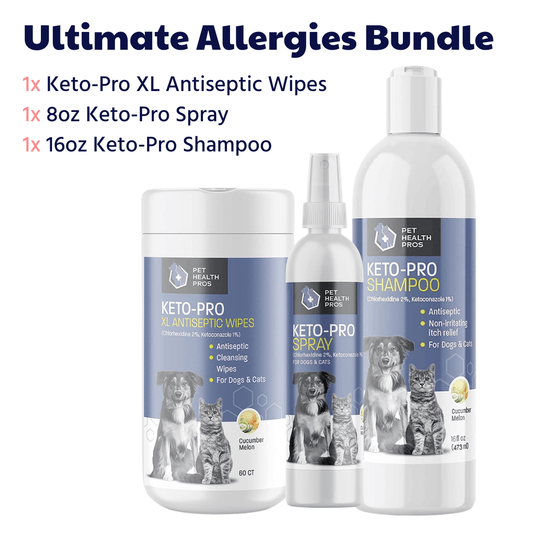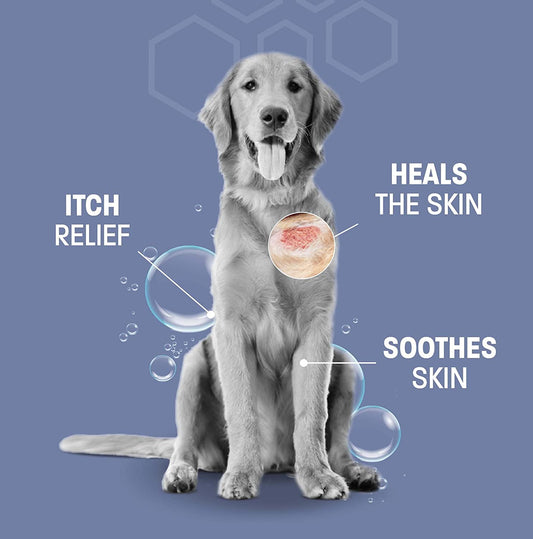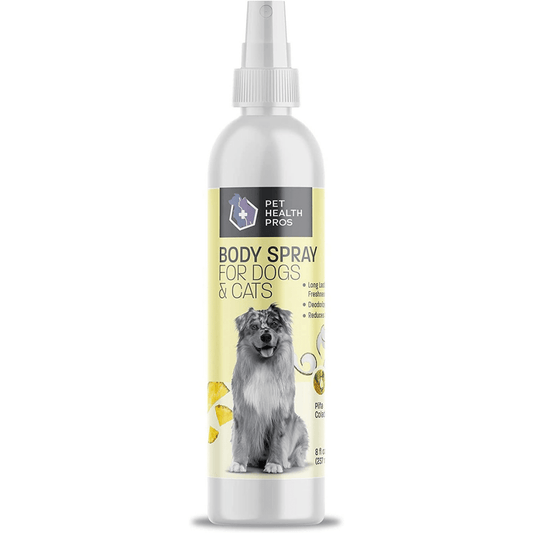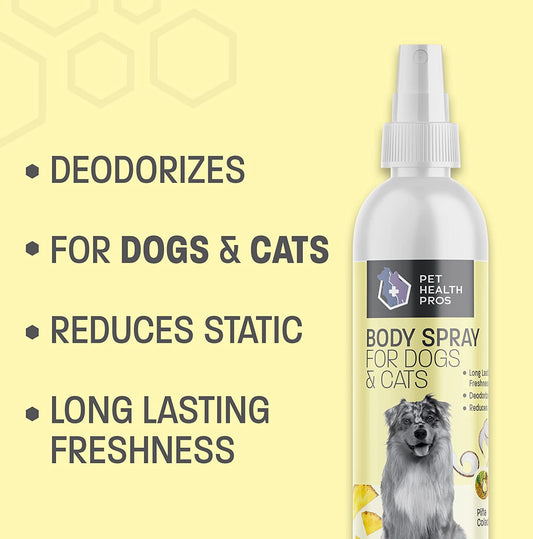Taking care of your dog's anal glands is a crucial aspect of their overall health that often goes unnoticed. This step-by-step guide will provide you with the information and techniques needed to safely express your dog's anal glands, ensuring their comfort and preventing potential health issues. With insights from Pet Health Pros, a U.S.-based company with over fifty years of combined experience in veterinary medicine, you'll learn how to incorporate this practice into your regular pet care routine effectively.
Key Takeaways
- Understanding the function and potential issues of anal glands in dogs is essential for preventing long-term health complications.
- Proper preparation, including gathering supplies and creating a calm environment, is key to a safe and stress-free anal gland expression process.
- Following a step-by-step guide for expressing anal glands helps ensure the procedure is done correctly and comfortably for your dog.
- Post-expression care is critical for monitoring your dog's response to the procedure and identifying any signs that may require veterinary attention.
- Regular maintenance of anal gland health through diet, exercise, and check-ups with products from Pet Health Pros can prevent issues and keep your dog happy and healthy.
Understanding the Importance of Anal Gland Health
The Role of Anal Glands in Dogs
Dogs have two small anal glands located on either side of their rectum. These glands secrete a distinctive-smelling fluid that is used for marking territory and for identification by other dogs. Proper functioning of these glands is crucial for a dog's well-being.
When a dog defecates, the pressure causes the glands to express naturally. However, if the glands do not empty properly, discomfort and health issues can arise. It's important for dog owners to recognize when their pet might need help with this process.
Regular monitoring and maintenance of anal gland health can prevent discomfort and potential infections.
Understanding the anatomy and purpose of these glands is the first step in ensuring your dog's anal glands are healthy and functioning as they should.
Recognizing the Signs of Anal Gland Issues
Being vigilant about your dog's anal gland health is crucial, as issues can lead to discomfort and more serious health problems. Recognizing the early signs of anal gland issues is key to addressing them promptly. Dogs may exhibit several indicators that suggest their anal glands require attention.
- Scooting or dragging their rear on the ground
- Excessive licking or biting at the anal area
- A distinct fishy odor emanating from the rear
- Swelling or redness near the anus
- Difficulty defecating or changes in stool consistency
If you notice any of these symptoms, it's important to take action. While some dogs may need a simple expression of their anal glands, others might require veterinary intervention, especially if there's an infection or abscess.
Early intervention can prevent the progression of anal gland issues and ensure the comfort and health of your dog.
Remember, regular monitoring of your dog's anal gland health can help avoid complications. For expert guidance and personalized care, consider platforms like Pet Genius, which offer resources for all types of pets.
Long-Term Health Implications
Neglecting the health of your dog's anal glands can lead to chronic issues that may compromise their overall well-being. Impacted anal glands are a common problem, where the fluid inside the gland is not expressed and it builds up, causing a blockage. This can result in discomfort, infection, and even abscesses that require surgical intervention.
Proper maintenance of anal gland health is crucial for preventing these long-term complications. A diet rich in fiber can help create bulkier stools, which naturally aid in the expression of the glands during defecation. Additionally, regular check-ups with a veterinarian can detect early signs of trouble, allowing for timely treatment.
It is essential to understand that while some dogs may never experience anal gland issues, others may require frequent attention. This variability underscores the importance of individualized care and monitoring.
Incorporating anal gland health into your pet's routine care can save them from discomfort and save you from costly vet bills. Here's a simple checklist to help you stay on top of your dog's anal gland health:
- Monitor your dog's defecation habits for any changes.
- Watch for signs of scooting or licking the anal area.
- Consult with your vet about the appropriate frequency of anal gland expressions for your dog.
- Consider incorporating supplements or foods that promote digestive health.
Preparing for the Procedure
Gathering the Necessary Supplies
Before you begin the process of expressing your dog's anal glands, it is crucial to have all the necessary supplies on hand. Ensure a smooth and stress-free experience by preparing the following items:
- Gloves: To maintain hygiene and protect your skin.
- Paper towels or absorbent pads: For cleanliness and easy disposal.
- Chlorhexidine wipes: To sanitize the area before and after the procedure.
- A warm, damp cloth: To clean your dog's rear end post-expression.
Remember, using the right supplies not only facilitates the procedure but also minimizes discomfort for your dog. For instance, chlorhexidine wipes are recommended in a step-by-step guide to dog grooming for their effectiveness in cleaning and preparing the area.
It's important to keep your dog calm and comfortable throughout the process. A calm environment will help your dog stay relaxed, making the expression easier for both of you.
After gathering your supplies, double-check to ensure you have everything you need. This preparation will help you focus on the task at hand without any interruptions.
Creating a Calm Environment for Your Dog
Creating a calm environment is crucial for the well-being of your dog, especially during potentially stressful procedures like anal gland expression. Start by choosing a quiet room where your dog feels safe and comfortable. Minimize noise and distractions by turning off the TV and asking family members to give you some space.
Familiarity is key, so consider placing your dog's favorite blanket or bed in the area. A familiar scent can have a soothing effect. Additionally, speaking in a gentle, reassuring tone will help your dog stay relaxed.
It's important to remember that your dog can pick up on your emotions. Stay calm and patient, which in turn will help your dog to remain calm.
If your dog is particularly anxious, you may want to introduce the space gradually before the procedure. Allow them to explore and get comfortable with the environment on their own terms. This can be done over several days if necessary.
Safety Measures to Consider
Before expressing your dog's anal glands, it's crucial to prioritize safety for both you and your pet. Wear disposable gloves to maintain hygiene and prevent the spread of bacteria. Ensure you're in a well-lit area to accurately locate the anal glands. It's also important to have a clear understanding of the anatomy involved; dogs have two anal glands which are little sacs that sit inside their rectum at the 4 and 8 o'clock position.
Be gentle and patient during the process to minimize discomfort for your dog and reduce the risk of injury.
If your dog shows signs of distress or aggression, it's best to stop and consult a veterinarian. Remember, if you're uncertain about the procedure, seeking professional help is always the safest option. Below is a list of safety measures to keep in mind:
- Wear protective eyewear to shield against unexpected sprays.
- Keep a damp cloth handy for immediate clean-up.
- Have styptic powder available in case of minor bleeding.
- Avoid over-squeezing, which can cause pain or damage to the glands.
By following these precautions, you can help ensure a safe and successful anal gland expression for your furry friend.
The Step-by-Step Expression Process
Positioning Your Dog Correctly
Before attempting to express your dog's anal glands, it is crucial to position your dog correctly to ensure the safety and comfort of both you and your pet. Start by having your dog stand or lie on its side on a comfortable, non-slip surface. If you have a small dog, you may also choose to place them on a raised, stable surface such as a table or countertop, using a non-slip mat for added security.
Gently hold your dog in place, reassuring them with a calm voice and gentle petting. It's important to maintain a soothing demeanor to keep your dog relaxed throughout the process. If your dog is particularly anxious or squirmy, having a second person to assist can be very helpful.
Remember, the goal is to create a stress-free experience for your dog, minimizing discomfort and potential for injury.
Here is a simple checklist to ensure you're ready to proceed:
- Non-slip surface prepared
- Dog positioned comfortably, standing or lying on its side
- Calm environment established
- Assistance ready if needed
Once your dog is properly positioned, you can move on to locating the anal glands with care and precision.
Locating the Anal Glands
Before attempting to express your dog's anal glands, it is crucial to know where to locate them. The anal glands, or anal sacs, are situated at the 4 o'clock and 8 o'clock positions around the dog's anus. Gently feel for two small, grape-like sacs beneath the skin at these positions. It's important to be gentle to avoid causing discomfort or injury to your dog.
When locating the anal glands, use the pads of your fingers to softly palpate the area, searching for the small sacs. If you're unable to feel them or if your dog shows signs of pain, it's best to seek professional help.
Remember, the goal is to locate the glands without causing stress to your dog. Here's a simple checklist to ensure you're prepared:
- Wash your hands thoroughly.
- Wear disposable gloves for hygiene.
- Have your dog in a comfortable and secure position.
- Keep tissues or paper towels within reach.
- Stay calm and composed to help your dog relax.
Gentle Expression Techniques
When expressing your dog's anal glands, it's crucial to use gentle pressure to avoid discomfort or injury. Start by placing a gloved finger and thumb on either side of the anus, at the four o'clock and eight o'clock positions relative to the gland openings. Apply soft pressure upwards and inwards towards the gland. You should feel a small, pea-sized gland; if not, the gland may not be full or could be impacted, requiring veterinary attention.
Consistency is key in this process. The pressure should be steady and gradual. If you encounter resistance or your dog shows signs of pain, stop immediately. Here's a simple list to ensure you're on the right track:
- Ensure your dog is calm and still.
- Locate the anal glands by feel.
- Apply gentle, consistent pressure.
- Stop if there is resistance or discomfort.
Remember, the goal is to relieve your dog of discomfort, not to cause additional stress. If at any point you feel unsure, it's best to consult a professional.
Incorporating techniques such as combining melatonin dog treats with aromatherapy, music therapy, behavioral training, and calm energy can help soothe your dog and promote overall wellbeing, making the process smoother for both of you.
Cleaning Up After the Procedure
Once the anal gland expression is complete, maintaining cleanliness is crucial to prevent any infection or discomfort for your dog. Dispose of any used gloves, wipes, or paper towels immediately to ensure a sanitary environment. Wash your hands thoroughly with soap and water, and consider using a pet-safe disinfectant to clean the area around your dog's anus.
After cleaning, observe your dog for any signs of continued discomfort or irritation. A gentle wipe with a damp cloth can help remove any residual fluid from your dog's fur. It's also a good time to check your dog's eyes for any debris or irritation, as the expression process can sometimes cause stress. Tips for effective dog eye cleaning include creating a relaxed atmosphere and using dog-specific wipes gently.
Remember, rewarding your dog after the procedure can help associate the experience with positive outcomes, making future expressions easier for both of you.
Post-Expression Care and Monitoring
Soothing Your Dog Post-Procedure
After expressing your dog's anal glands, it's crucial to provide comfort and reassurance to help them relax. Gently petting and speaking to your dog in a soothing tone can significantly ease their stress. Offer a quiet space where they can rest undisturbed, away from loud noises and household activity.
Rewarding your dog with a treat can also be a positive reinforcement, making the experience less daunting for future procedures. Ensure the treat is appropriate for their diet and does not counteract the benefits of the anal gland expression.
It's important to monitor your dog for any signs of discomfort or irritation following the procedure. A calm and attentive approach will help you detect any abnormal responses early on.
Remember to keep the area clean and dry to prevent any infection. If you notice any unusual behavior or symptoms, do not hesitate to contact your veterinarian for advice.
Identifying Normal vs. Abnormal Responses
After expressing your dog's anal glands, it's crucial to monitor their behavior and the condition of the glands. Normal responses include temporary discomfort and a mild, transient odor. However, some dogs may exhibit signs that warrant concern.
Abnormal responses can vary, but there are key indicators that something may be amiss:
- Excessive licking or biting at the anal area
- Swelling or redness around the anus
- Persistent foul odor post-expression
- Signs of pain such as whining or reluctance to sit
If you notice any of these symptoms persisting beyond 24 hours, it is important to consult your veterinarian.
Understanding the difference between normal and abnormal responses is essential for ensuring the well-being of your pet. If you're ever in doubt, seeking professional advice is the best course of action.
When to Seek Veterinary Assistance
After expressing your dog's anal glands, it's crucial to monitor their behavior and the condition of the glands. Seek veterinary assistance immediately if you notice any of the following signs: persistent discomfort, swelling, bleeding, or signs of infection such as pus or a foul odor. These symptoms may indicate an underlying issue that requires professional care.
Veterinary intervention is also advised if you're unable to express the glands fully or if your dog shows signs of severe pain during the attempt. Remember, your dog's comfort and health are paramount.
- Persistent discomfort or pain
- Swelling or bleeding from the anal area
- Signs of infection (pus, foul odor)
- Difficulty in expressing the glands
- Severe pain during expression
It's essential to approach anal gland expression with care and to recognize when a situation is beyond home care. In such cases, a veterinarian's expertise is not just beneficial, it's necessary for your dog's well-being.
Incorporating Anal Gland Health into Regular Pet Care
Diet and Exercise Tips for Anal Gland Health
Maintaining a healthy diet and regular exercise routine is crucial for your dog's overall well-being and specifically for maintaining anal gland health. High-fiber foods can help ensure firm stools, which naturally express the anal glands during defecation. Consider incorporating pumpkin or wheat bran into your dog's diet to boost fiber intake.
Regular exercise helps to keep your dog at a healthy weight, which is important as obesity can contribute to anal gland issues. Exercise also stimulates bowel movements, aiding in the natural expression of the glands. Here's a simple guideline to follow:
- Monitor your dog's weight regularly
- Provide a balanced diet with adequate fiber
- Ensure daily physical activity
Remember, a consistent routine is key to preventing anal gland problems. If you notice any changes in your dog's bowel movements or anal gland health, consult your veterinarian promptly.
The Role of Pet Health Pros Products
Pet Health Pros combines the best of nature and science to support your dog's anal gland health. Their products are formulated with natural digestive enzymes that aid in maintaining a balanced diet and proper digestion, which is crucial for the regular functioning of anal glands. Consistent use of these products can lead to fewer anal gland issues and a happier, healthier pet.
- Digestive Enzymes: Break down food for better absorption
- Probiotics: Support a healthy gut flora
- Fiber Supplements: Encourage regular bowel movements
- Hydration Aids: Ensure adequate water intake
By incorporating Pet Health Pros' supplements into your dog's diet, you can help prevent the discomfort and health issues associated with anal gland problems.
With over fifty years of experience in veterinary medicine, Pet Health Pros offers a range of products that cater to the evolving needs of pets. Their commitment to quality and customer satisfaction is evident in their collaboration with veterinarians and use of locally sourced ingredients. Remember, a healthy diet and regular exercise are the cornerstones of your dog's overall well-being, including anal gland health.
Scheduling Regular Veterinary Check-Ups
Regular veterinary check-ups are a critical component of maintaining your dog's anal gland health. By scheduling routine visits, you can ensure that any potential issues are identified and addressed early on. These visits allow your veterinarian to monitor your dog's overall health and to provide professional gland expressions if needed.
Veterinary check-ups should be a part of your dog's regular care schedule. Depending on your dog's age, breed, and health history, your vet may recommend a specific frequency for these visits. Here's a simple guideline to consider:
- Puppies: Every 3-4 weeks until they are 4 months old
- Adult dogs: Once a year for a comprehensive check-up
- Senior dogs or those with health issues: Every 6 months
Remember, the frequency of visits may vary based on your dog's individual needs. Always consult with your vet to determine the best schedule for your pet.
Routine Vet Check-ups are essential in catching and addressing any emerging anal gland issues before they escalate into abscesses or other complications. By keeping a consistent schedule, you can help ensure your dog's comfort and well-being.
Ensuring your pet's anal gland health is a crucial aspect of their overall well-being. Regular care and attention to this area can prevent discomfort and serious health issues. To support your pet's health journey, visit our website for a comprehensive range of wellness products, grooming supplies, and expert advice. Take the first step towards a happier, healthier pet by exploring our selection of high-quality pet care items, all vet-approved and made in the USA. Click here to learn more and shop now!
Conclusion
In conclusion, expressing your dog's anal glands is an important aspect of their health that should be approached with care and knowledge. By following the step-by-step guide provided, you can ensure this procedure is done safely and comfortably for your furry friend. Remember, if you're ever unsure or uncomfortable with performing this task, it's best to consult a professional. Pet Health Pros is committed to the well-being of your pets, offering expertly crafted health supplies and educational content to assist you in every aspect of pet care. With our dedication to quality and customer satisfaction, you can trust that you're providing the best for your pet. For more information on pet health and our products, visit our online store or Amazon storefront, and join our community of caring pet owners.
Frequently Asked Questions
Why is it important to express my dog's anal glands?
Expressing your dog's anal glands is important to prevent discomfort, infection, and impaction. Anal glands can become problematic if they do not empty properly, leading to a range of health issues.
How can I tell if my dog is having anal gland issues?
Signs of anal gland issues include scooting on the ground, licking or biting the area, a foul smell, or difficulty defecating. If you notice any of these signs, it's important to check your dog's anal glands.
What supplies do I need to safely express my dog's anal glands at home?
You'll need latex gloves, paper towels, warm water, a washcloth, and a quiet, comfortable space. Ensure you have all supplies on hand before starting the procedure.
Can I use Pet Health Pros products for anal gland expression?
Yes, Pet Health Pros offers high-quality pet health supplies that can be used during the anal gland expression process. Their products are crafted in collaboration with veterinarians and made with top-grade ingredients.
What should I do if my dog reacts negatively after anal gland expression?
If your dog shows signs of discomfort, excessive licking, or swelling after the procedure, it's important to consult a veterinarian. They can provide appropriate post-expression care and check for any complications.
How often should I schedule veterinary check-ups for my dog's anal gland health?
Regular veterinary check-ups are essential for maintaining your dog's anal gland health. Your vet can recommend a schedule based on your dog's specific needs, but generally, a check-up every 6 months is advisable.
